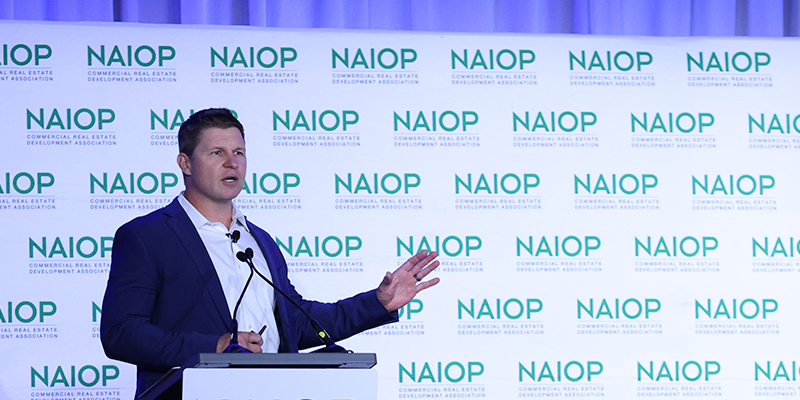The logistics market is red-hot, but external forces are trying to cool it. A panel at I.CON West this week in Long Beach, California, addressed technical, regulatory and political challenges facing industrial real estate in Southern California, and shared recommendations for all developers working with decision-makers in their communities.
As of July 1, 2020, all agencies throughout California were required to adopt vehicle miles traveled (VMT) as the transportation impact metrics for the California Environmental Quality Act (CEQA). VMT replaced automobile delay, which had been commonly measured by Level of Service (LOS). “The state was suggesting that VMT was the most important measure of environmental impact,” said Aric Evatt, President, Urban Crossroads, Inc., as VMT measures the total amount of driving over a given area rather than just the vehicle delay.
From city to city and county to county, local agencies have adopted various approaches to VMT in deciding what levels of VMT change constitute a significant transportation impact. For example, Evatt said, some areas have an impact threshold of 15% below existing, which is almost unachievable for certain areas, while others have set “better than existing” as their impact threshold.
For spec buildings without known tenants, taking on some of these trip reduction mitigation measures can be limiting when marketing the building to smaller tenants, said Evatt. The result: Many small projects can end up needing an Environmental Impact Report (EIR), potentially adding a year and thousands of dollars to the development process.
Another potential result, according to Evatt, is that smaller projects may be incentivized to locate their project – and all the fiscal benefits associated with it – in urbanized areas or cities with relaxed screening criteria. They may also seek redevelopment sites where credit can be taken for existing uses.
Economics don’t always drive council or community support for a project, however. Finding tenants is less of a concern for industrial developers in Southern California these days than getting a project approved; developers must explain their benefits to the local communities in ways that go beyond the dollars and cents involved.
“What we’re seeing consistently is an issue where the traction isn’t as strong when we say we’re focusing on economic benefits like jobs,” said Jeremy Krout, AICP, president/CEO, EPD Solutions, Inc. “We’re hearing a lot more desire and direction to find more impactful ways to connect with the community about the benefits of the projects in addition to the fiscal impacts.”
Krout said his company is working to connect with local and grassroots organizations to build community support behind the projects. Once local organizations are engaged, they can help drive support for the project when decision-makers cast their votes.
“It doesn’t necessarily have to be any one thing, and it might be something really small, but you wouldn’t have known about it until you talked to the people in the community,” said Scott Ochoa, city manager, City of Ontario Economic Development. Residents of the Inland Empire don’t always have enough access to amenities; they are eager for places to sit down for dinner, grab a boba tea and practice yoga. “As simple as these amenities might be, they are worth their weight in gold and might pay off dividends,” said Ochoa.
Next, the panel talked about eviction moratoriums; just last week, the U.S. Supreme Court blocked a temporary ban on evictions, however, eviction moratoriums issued by the state of California and separately by Los Angeles County remain in effect until Sept. 30.
“Look at the cities you’re dealing with and whether there’s a tradition or history of a pro-growth attitude,” recommended John Condas, partner, Allen Matkins.
If the city council is changing rapidly or doesn’t have a strong economic development group, note the warning signs, said Ochoa. He suggested working with all parties involved in a three-legged stool of support: If you’re going to build relationships with a council, don’t neglect the staff and don’t neglect the community. At the end of the day, he noted, “potholes don’t have political affiliation.”
This post is brought to you by JLL, the social media and conference blog sponsor of NAIOP’s I.CON West 2021. Learn more about JLL at www.us.jll.com or www.jll.ca.









